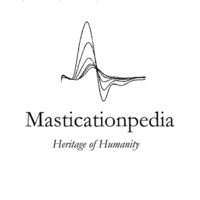Índice del libro
Go to top
Ciencia normal
- Lógica del lenguaje médico
- Sistemas complejos
- Lógica del lenguaje médico: Introducción a la probabilidad cuántica en el sistema masticatorio
- Conclusiones sobre el status quo en la lógica del lenguaje médico respecto al sistema masticatorio.
- 4º Caso clínico: Trastornos temporomandibulares
- 5° Caso Clínico: Actividad Electromiográfica Espontánea
Crisis de paradigma
Research Diagnostic Criteria (RDC)
- Análisis de los movimientos mandibulares. Parte 1: Replicador electrognatográfico
- Eje bisagra transversal
- Speed of mandibular movement
- Complexity of chewing kinematics
Temporomandibular Joint
- Computerized Tomography of the TMJ
- Magnetic resonance imaging of the TMJ
Mandibular kinematic replicators
- Advantages and limits of Kinematic replicators
- Pantography
- Axiography
- Electrognatography
Transcutaneous Electric Nerve Stimulation
- Free way space before stimulation
- Free way space after stimulation
- Closing trajectory from TENS
Electromyography (EMG)
- EMG Interferential pattern
- EMG at rest position
- Quantitative analysis of the EMG
- Fourier transform
- Wavelett
Conclusions to the Paradigm crisis chapter
- Incompleteness in the 'Research Diagnostic Criteria'
- Need for a new paradigm
Ciencia extraordinaria
Masticatory Neurophysiology
- Center of masticatory pattern
- Mesencephalic mecchanism
- Trigeminal Motor nucleus
Sensory network
- Proprioceptive mechanisms
- Neuromuscular spindles
- Sensory mechanisms from the depressor muscles
- Golgi Tendon organs
- Role of impulses from the neck muscles
- Periodontal and oral Sensory Factor
- Pharyngeal sensory closure
- Sensory factors of the TMJ
Trigeminal System Connectivity
- Definition of the Fundamental Unit
- Structural and functional connectivity separation
- Understanding of 'Emergent Behaviour'
- Connectivity measurement
- Maximal Neural Energy Evoked
- Bilateral Trigeminal neuromotor organic symmetry
- Functional motor symmetry
- Normalization concept
- Organic vs Functional Symmetry
- Neuro Gnathological Functions paradigm
- New Clinical Index
